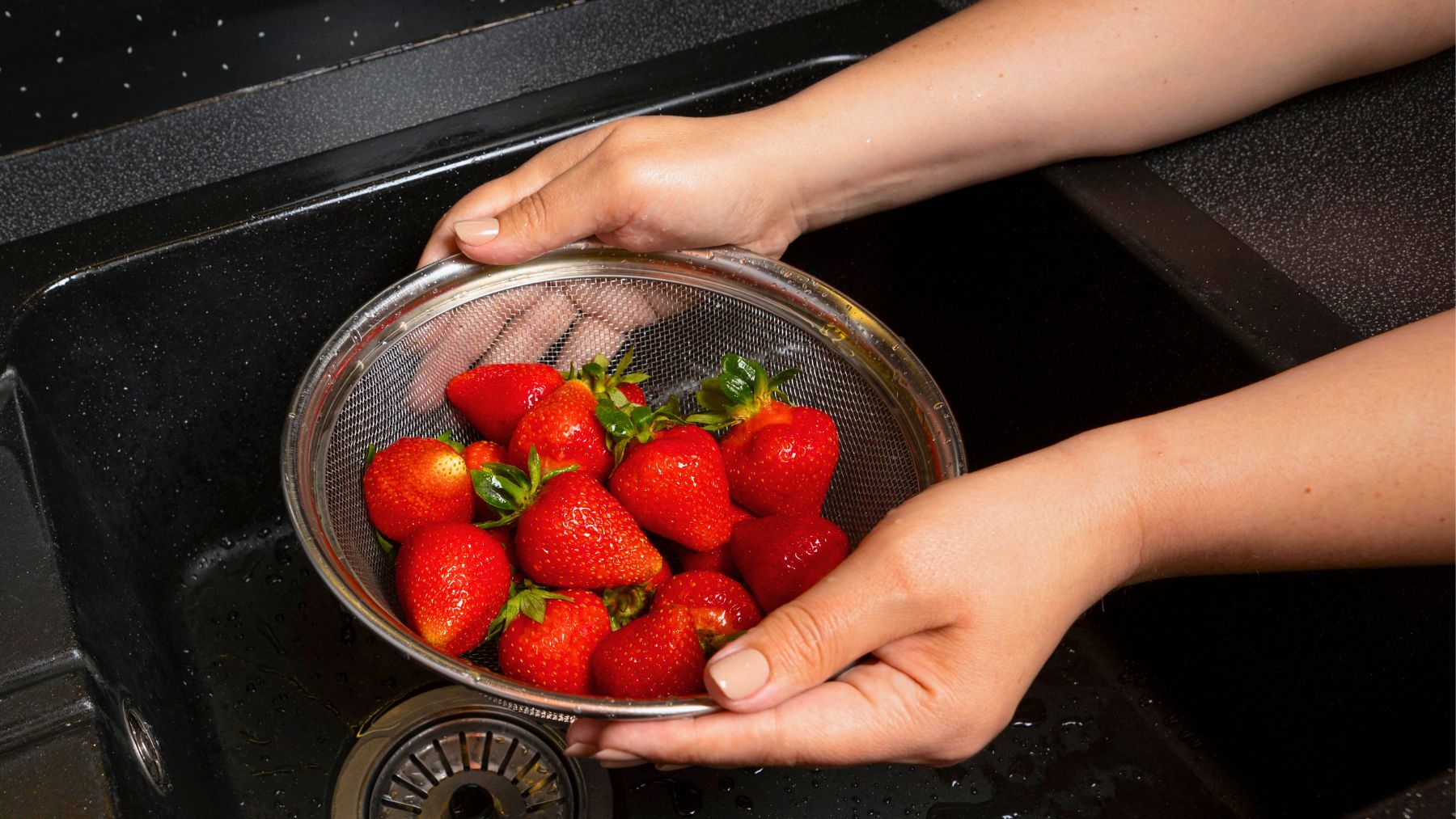Strawberries are one of the most pesticide-contaminated fruits sold in the U.S. They’re also soft and porous, which makes cleaning them a little more important than with other produce. A quick rinse under the faucet might not be enough to clear off the residue you don’t want to eat.
Here, we’ll explain the best method to clean strawberries using vinegar. It’s easy, affordable, and more effective at removing pesticide residue and bacteria than water alone. We’ll also include a few simple tips to keep your berries fresh longer once they’re clean.
How to wash strawberries with vinegar
If you want to remove most of the pesticides and bacteria from strawberries, vinegar is your best bet. A vinegar solution helps break down residues left from farming and handling. It also kills off bacteria and can remove dirt more effectively than just water.
To clean strawberries with vinegar, fill a bowl with three parts cold water and one part white or apple cider vinegar. Submerge the strawberries and let them soak for about five minutes. Swirl them gently while soaking to help loosen any surface grime. Once finished, rinse them thoroughly under cold running water to remove any leftover vinegar taste. Then drain and pat them dry before eating or storing.
This method works because vinegar has natural antimicrobial properties. It’s safe, cheap, and doesn’t require any special equipment or commercial produce wash. As long as you rinse the fruit well afterward, there’s no risk of altering the flavor. It’s also a good way to catch anything you might not see, like bacteria from transport or handling, and even tiny bugs.
Tips to store strawberries and keep them fresh
Once your strawberries are clean, storing them the right way can help extend their life. Moisture is the biggest threat to fresh berries, so how you store them makes a big difference.
- Store them unwashed until you need them: If you’re not using the whole batch right away, don’t wash them all at once. Wash only what you plan to eat. Excess moisture speeds up mold growth and spoilage.
- Use a paper towel or dry cloth: Line the container with a paper towel to absorb moisture. You can also loosely wrap the strawberries in a clean, dry cloth before placing them in a container.
- Keep them in the fridge: Strawberries last longer in the refrigerator. Place them in the crisper drawer or on a shelf in a breathable container.
- Discard moldy or damaged berries right away: One bad berry can ruin the whole bunch fast. As soon as you see mold or mush, remove the affected strawberries. This prevents the mold from spreading to the rest.
- Don’t use produce wash or soap: Commercial washes and dish soaps aren’t recommended for strawberries. They can leave residues behind and don’t work better than vinegar or plain water.
Even with the best cleaning and storage, strawberries are delicate and have a short shelf life. But handling them the right way can help you enjoy every last berry before it goes bad.

